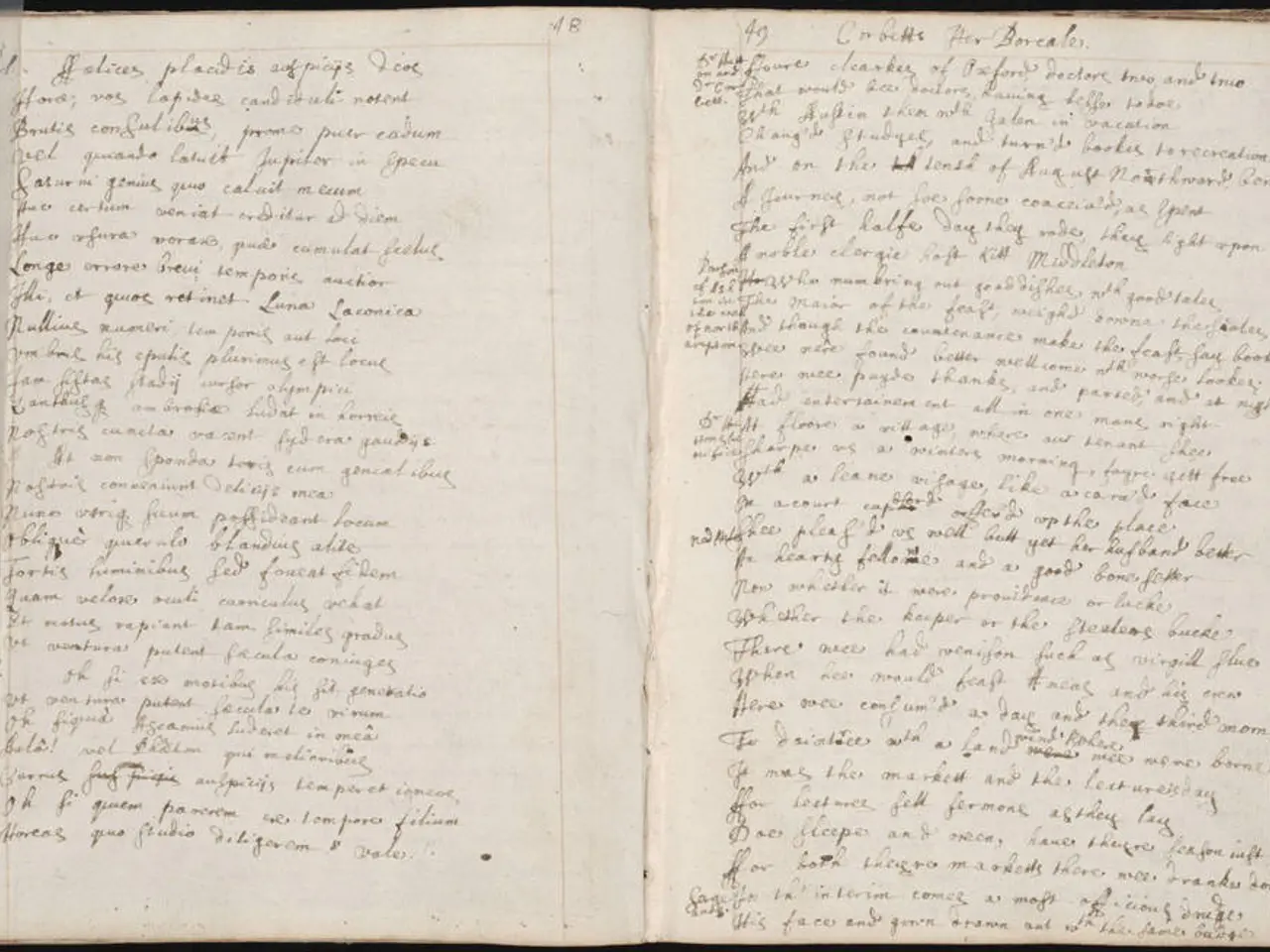Transformed Narrative Structure: Twelve Pivotal Phases of Mythic Plot Design
The Hero's Journey, a narrative structure popularised by mythologist Joseph Campbell, provides a universal pattern that many stories follow. This structure outlines the journey of a hero as they embark on an adventure, face challenges, gain new understanding, and return transformed.
The Hero's Journey consists of three main stages: Departure, Initiation, and Return, with about twelve key steps. These steps include the Call to Adventure, Meeting the Mentor, Ordeal, and Return with the Elixir.
The Ordinary World
The journey begins in the Ordinary World, where the main character is introduced. This is the hero's comfortable, familiar environment, which will soon be disrupted.
The Call to Adventure
The Call to Adventure introduces the disruption that pulls the protagonist out of their normal life. This could be a mysterious invitation, a prophecy, or a personal crisis that demands action.
Refusing the Call to Adventure
At this stage, the hero may hesitate or refuse to accept the call to adventure. This shows their initial reluctance to leave the safety of the Ordinary World.
Meeting the Mentor
The fourth stage, Meeting the Mentor, introduces a character or object that helps prepare the hero for the journey ahead. This mentor could be a guide, a teacher, or an object of power that aids the hero in their quest.
Crossing the Threshold
The fifth stage, Crossing the Threshold, marks the point where the protagonist leaves the familiar world behind and enters a new, dangerous world. This is the moment when the hero commits fully to the adventure.
Test, Allies, and Enemies
The second act of the Hero's Journey begins with the section "Test, Allies, and Enemies." The hero faces various tests, meets allies who help them grow and overcome setbacks, and encounters enemies who work actively against them.
The Ordeal
The ordeal is the biggest test yet and a transformative event that affects how the hero goes forward on their journey. This is a time of great challenge and personal growth, where the hero's abilities are put to the test.
Approach to the Inmost Cave
The section "Approach to the Inmost Cave" gives the characters (and reader) a chance to reflect on the challenges of the previous section. The hero and allies are beaten and bruised, but the protagonist is still alive.
The Hero's Darkest Hour
The ordeal brings the hero to their darkest point yet, and results in a metamorphosis of sorts that allows them to push through to the other side. This is the hero's lowest point, but it also marks the beginning of their transformation into a true hero.
The Reward
With the reward in hand, the hero begins the return journey. The hero's connection between the reward and the final conflict should be clear.
The Return
The hero returns from the special world to the ordinary world, bringing with them the elixir. At this point, the hero has redoubled their effort and believes they are ready to face the challenge, despite their setbacks.
The Final Confrontation
The final confrontation begins to take shape. The hero uses all they have learned on the journey to defeat the antagonist.
The Hero's Transformation
The hero comes out of the confrontation changed, transformed into a true hero. The hero's internal conflict is re-established and shown how solving it has changed their view and life, completing the character arc.
The Hero's Journey offers writers a flexible yet time-tested framework that facilitates the crafting of stories with depth, coherence, and universal appeal, applicable across genres and formats from myths to contemporary novels and films.
- The protagonist's comfortable lifestyle in the Ordinary World gets disrupted with the Call to Adventure, manifesting as a fashion and beauty makeover, a food and drink challenge, or a home and garden project that demands action.
- Refusing the Call to Adventure could represent a hero's hesitation in venturing into unfamiliar territories of relationships, maybe neglecting their pets or refusing to plan a travel adventure.
- Meeting the Mentor could be a character, like a lifestyle guru, a fashion designer, a culinary expert, or a travel guide, who motivates and educates the hero, enabling their journey.
- The hero's ordinary book collection takes on new significance as they face Tests, Allies, and Enemies, with each book read providing insights, offering comfort, or serving as a source of inspiration during their trials. The entertainment sector, be it films, music, or theatre, could provide solace and motivation throughout the journey.




